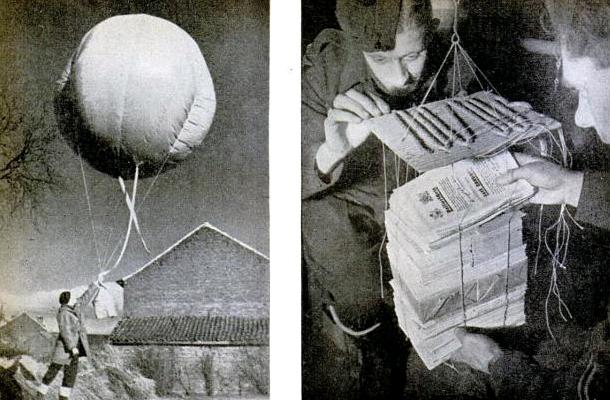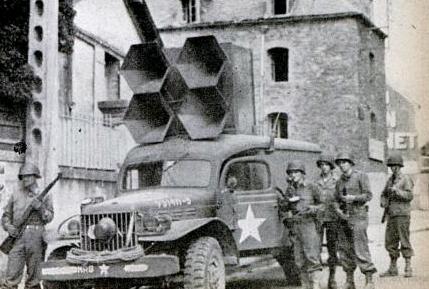Seventy years ago this month, the June 1945 issue of Popular Science
carried an interesting article on psychological warfare in all of its forms. The main method of directly reaching enemy troops was the leaflet, which could be dropped from airplanes, balloons, or even artillery shells.
In an earlier series of posts, we looked at the Japanese balloons designed to travel from Japan to North America, and the ingenious control mechanism to keep them at altitude. Since Allied propaganda balloons had a much shorter distance to travel, they simply employed a fuse that would burn the ropes at the proper time, or maybe drop some ballast for longer flights.
 The leaflet shown here was typical. According to the article, the Japanese text read as follows:
The leaflet shown here was typical. According to the article, the Japanese text read as follows:
SOLDIERS OF THE IMPERIAL ARMY!
You have fought well, but the battle is lost. You are cut off with no hope of escape. Soon your food and ammunition will be gone.
You have only two fates–annihilation because unwise commanders sent you into our trap. Or good treatment behind the Allied lines.
Think it over. Ghosts in Yasukuni cannot help Japan. Death without meaning is only for fools.
Some of your friends know this. They have come over to us and they are safe. They are eating rice, smoking cigarettes, sleeping in peace. They know that life is precious. They are not ashamed to live.
Join them now. You will receive plenty of good food and kind treatment. Your identity will not be disclosed.
This is our only offer. If you do not accept it, we will be forced to destroy you.
–THE COMMANDER
The leaflet went on to give directions for safe surrender. Japanese were told to approach Allied positions singly by day and without arms. They were told to raise their hands and wave the pass.
For encouraging hold-out snipers to surrender, the army also employed trucks with large sound systems. But since bullets can travel about as far as sound, this was the most dangerous activity for psychological operations personnel.
The article also talked about the use of radio for psychological operations purposes. It noted that before the war, the U.S. had 11 shortwave stations, but now had 40, including six putting out 200 kilowatts. On the west coast, KGEI had been the only shortwave station, but now there were ten. There were also shortwave transmitters in Honolulu, Saipan, and the Phillipine Islands. Powerful mediumwave stations were in place in North Africa and England broadcasting to Europe. As soon as countries were liberated, a priority was getting broadcast stations on the air.
Click Here For Today’s Ripley’s Believe It Or Not Cartoon ![]()



Pingback: Leafleting of Japanese Cities, 1 August 1945 | OneTubeRadio.com